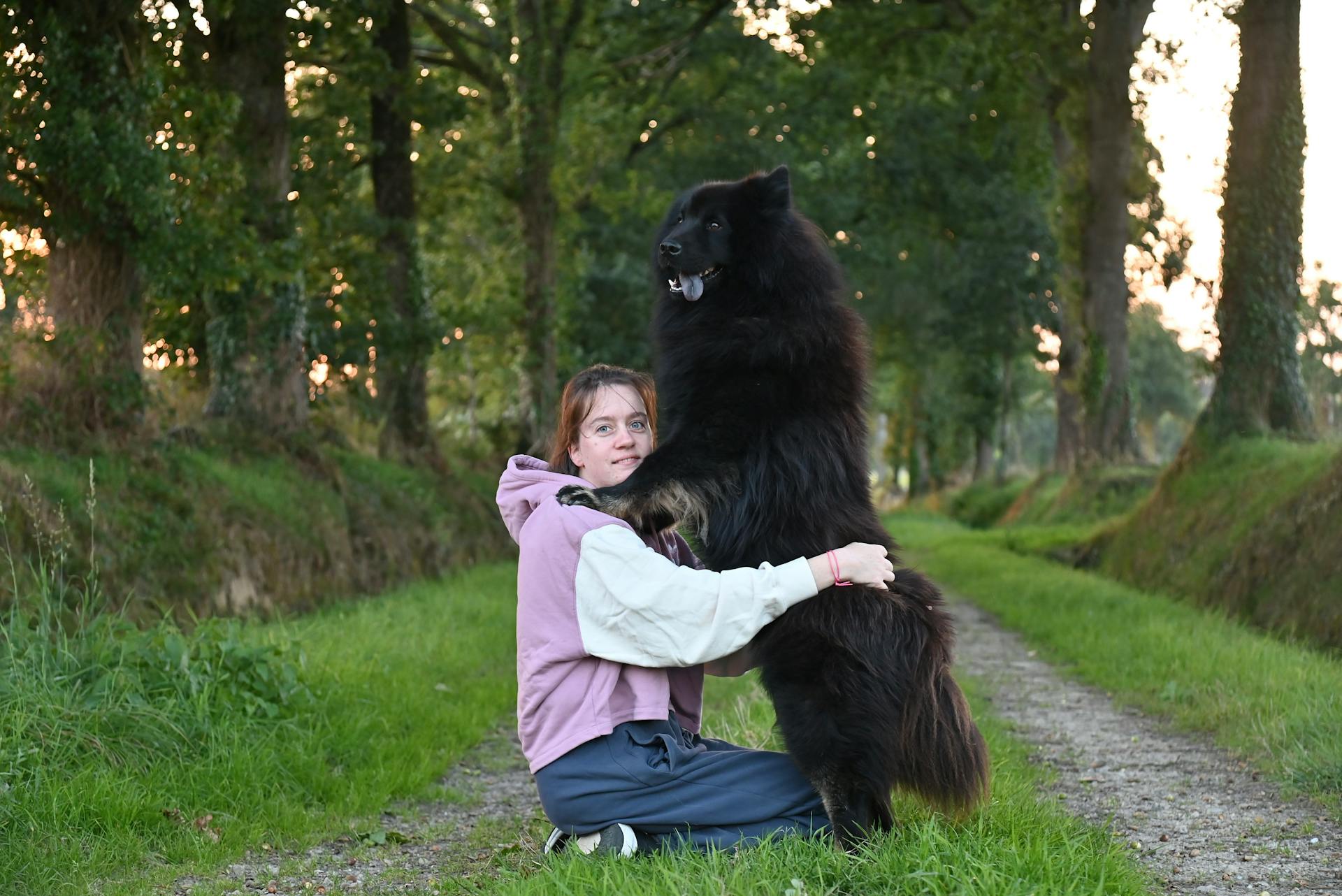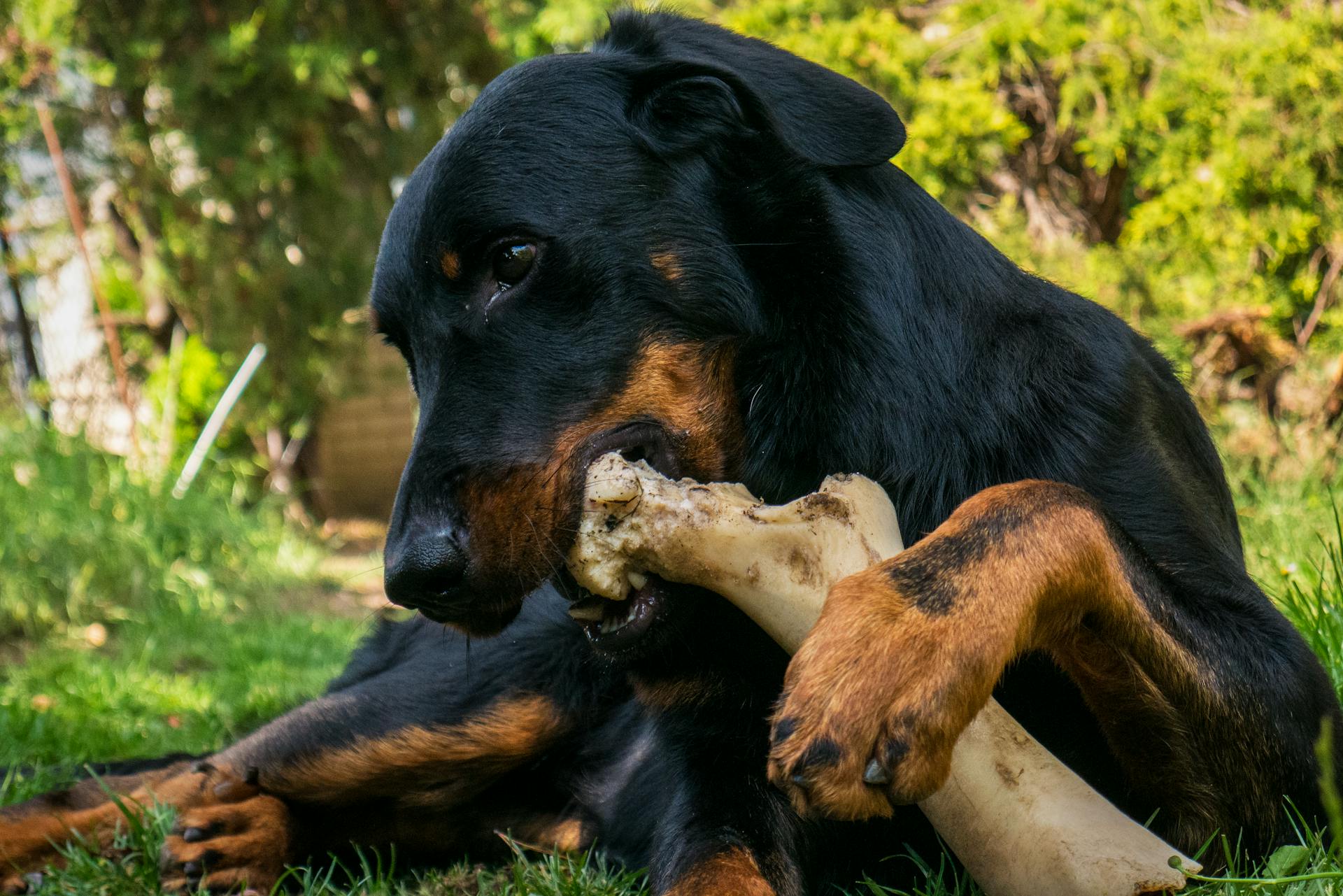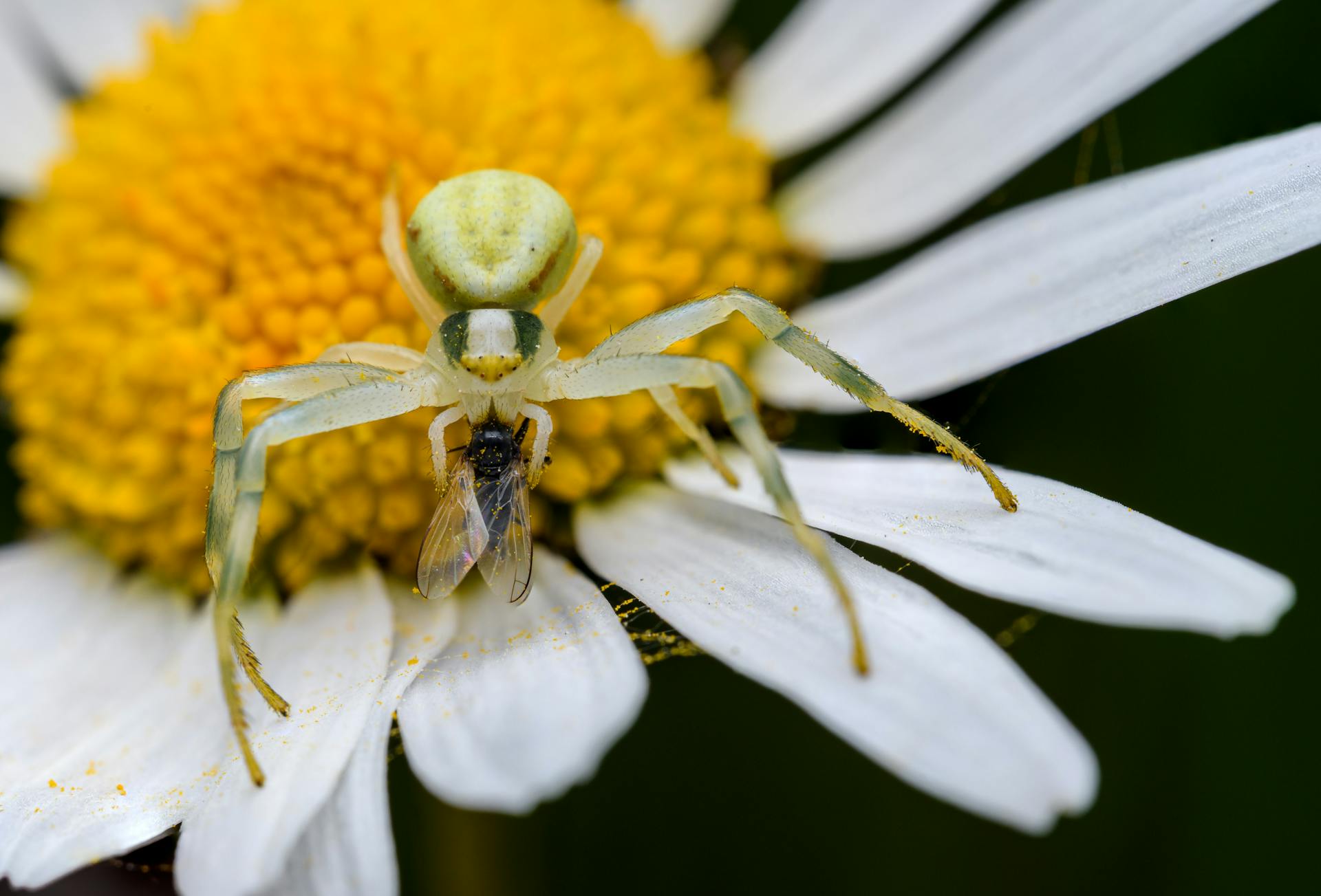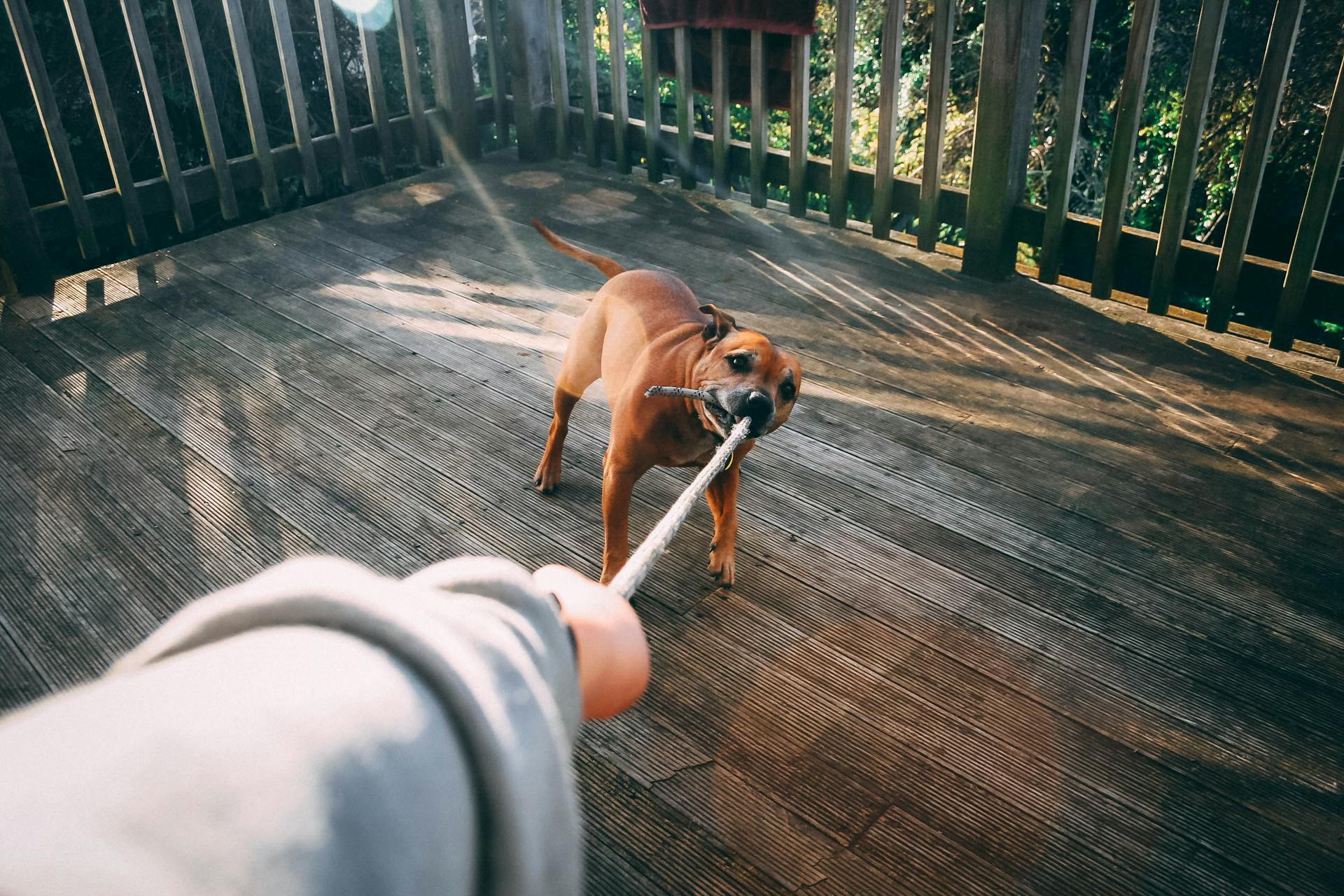
The Tibetan Mastiff bite is a serious concern for owners and potential owners alike. These powerful dogs can inflict severe injuries due to their massive size and strong jaw muscles.
Their bite force is estimated to be around 550 pounds per square inch (psi), which is stronger than most other breeds. This is due to their unique jaw anatomy and powerful muscles.
Tibetan Mastiffs are naturally protective of their families and territory, which can sometimes lead to biting incidents. According to studies, they are more likely to bite when they feel their family is being threatened or when they are defending their space.
To minimize the risk of a Tibetan Mastiff bite, it's essential to socialize them properly from an early age. This involves exposing them to various environments, people, and situations to help them become confident and calm in new situations.
Causes of Biting
Tibetan Mastiffs are known for their protective nature and territorial instincts, which can lead to aggressive behavior if not properly managed.
Tibetan Mastiffs are highly territorial dogs with a strong desire to protect their family and property, so it's essential to establish boundaries and provide proper training and socialization.
Their protective nature can be triggered if they feel their owner or family members are in danger, making it crucial to provide them with proper training to channel their protective instincts in a controlled manner.
Tibetan Mastiffs may exhibit aggressive behavior towards strangers or in unfamiliar environments if they aren't properly trained and socialized, so addressing any signs of aggression early on is vital.
Here are some key points to understand about aggression as a cause of Tibetan Mastiff biting:
- Territorial instincts can lead to biting if not properly managed.
- Protective nature can be triggered by perceived threats to family and property.
- Aggressive tendencies can be exhibited towards strangers or in unfamiliar environments.
If left unaddressed, boredom can lead to biting behavior in Tibetan Mastiffs, but providing mental stimulation and engaging activities can help alleviate this issue.
Tibetan Mastiffs require complex games and exercises to keep their minds sharp, so providing puzzle toys, interactive games, and training sessions can help prevent biting.
You might enjoy: How to Discipline a Dog That Bites
Regular exercise is also crucial for Tibetan Mastiffs to release their pent-up energy, so daily walks and playtime are essential.
Here are some key points to consider when it comes to boredom as a cause of Tibetan Mastiff biting:
- Mental stimulation is crucial to prevent biting.
- Engaging activities can help alleviate boredom and prevent destructive behavior.
- Providing chew toys and redirecting attention can help redirect biting behavior.
Factors Affecting Bite Force
The bite force of a Tibetan Mastiff is not fixed and can vary depending on several factors. Size plays a significant role in determining the bite force of Tibetan Mastiffs, with larger dogs having a stronger bite force due to increased muscle mass and jaw strength.
Age can also affect their bite force, with younger dogs having less developed jaw muscles compared to adult dogs. Overall health is another crucial factor, with dogs in optimal physical condition and good dental health likely to have a stronger bite force.
Here are some key factors that can affect a Tibetan Mastiff's bite force:
- Size: Larger dogs have a stronger bite force due to increased muscle mass and jaw strength.
- Age: Younger dogs have less developed jaw muscles compared to adult dogs.
- Overall health: Dogs in optimal physical condition and good dental health have a stronger bite force.
Tibetan Mastiffs are generally stronger than average, with a bite force estimated to range from 500 to 560 psi, making them formidable when it comes to their biting capabilities. However, it's essential to note that their bite force isn't the highest among all dog breeds.
Worth a look: Rottweilers Bite Force
Comparison and Statistics
The Tibetan Mastiff has a bite force of 500-560 pounds of pressure per square inch (psi), which is a significant amount of pressure that can exert up to 552 pounds of force.
This is comparable to other dog breeds, such as the German Shepherd, which has a bite force ranging from 238 to 750 psi, making them a formidable opponent. German Shepherds are often used in police and military work due to their biting capabilities.
The Rottweiler also has a formidable bite force, similar to or stronger than the Tibetan Mastiff, with a range of 328 to 350 psi. Rottweilers are known for their protective nature and are often used as guard dogs.
Here's a comparison of the bite forces of these breeds:
It's worth noting that while the Tibetan Mastiff has a strong bite force, it's not the breed with the highest bite force. German Shepherds and Rottweilers are among the dog breeds that possess comparable or even greater bite forces.
You might enjoy: Apbt Bite Force
Reasons for Attacks
Tibetan Mastiffs bite due to their strong protective instincts, which can be triggered by perceived threats to their family or territory. They have a powerful bite force, ranging from 500 to 560 pounds of pressure per square inch (psi), making them a formidable defense mechanism.
Aggression is a common reason for Tibetan Mastiff biting, often stemming from territorial instincts, a protective nature, and aggressive tendencies. Their calm and steady temperament can change in different social situations, leading to biting behavior if not properly managed.
In addition to aggression, protectiveness is another significant factor contributing to Tibetan Mastiff biting. Their loyalty to family is unmatched, and they'll go to great lengths to keep their owners safe. Proper training and socialization from an early age can help manage their protective instincts and prevent unwanted biting incidents.
Here are the key factors contributing to Tibetan Mastiff biting:
- Territorial instincts
- Protective nature
- Aggressive tendencies
- Boredom and lack of mental stimulation
Why Do Attack?
Tibetan Mastiffs are known to be protective of their family and territory, which can lead to biting if they feel threatened. This is due to their strong territorial instincts and desire to defend their loved ones.

Their bite force is quite impressive, ranging from 500 to 560 pounds of pressure per square inch, making them formidable in confrontations. This strong bite force was a useful trait when they were used to protect tribes and flocks.
Aggression can also be a cause of Tibetan Mastiff biting, triggered by territorial instincts, protective nature, and aggressive tendencies. Proper training and socialization are essential to manage their territorial instincts and prevent unwanted biting incidents.
Protectiveness is deeply ingrained in their nature, making them excellent guard dogs. However, this protectiveness can manifest in aggressive behavior towards perceived threats if not properly managed.
Tibetan Mastiffs require mental stimulation and engaging activities to prevent boredom, which can lead to biting. Providing them with puzzle toys, interactive games, and training sessions can help alleviate their boredom and prevent destructive behavior.
Here are some key points to consider when addressing the causes of Tibetan Mastiff biting:
- Territorial Instincts: Establish boundaries and provide proper training and socialization to help manage their territorial instincts.
- Protective Nature: Provide them with proper training to channel their protective instincts in a controlled manner.
- Aggressive Tendencies: Address any signs of aggression early on and seek professional help if needed to prevent biting incidents.
- Mental Stimulation: Provide them with puzzle toys, interactive games, and training sessions to alleviate boredom.
- Engaging Activities: Regular exercise and playtime can help keep them physically and mentally stimulated.
None
Some dog breeds are naturally more protective of their family and territory, like the Tibetan Mastiff, which can be a bit less trusting of strangers.

Inexperienced dog owners may find it challenging to train a Tibetan Mastiff, but with the right regime, they can learn quickly.
Good socialization is key to helping a Tibetan Mastiff become more trusting of people outside its family.
Young children and babies shouldn't be left alone with a Tibetan Mastiff, as they can be a bit rough around kids within their own family.
Temperament and Danger
Tibetan Mastiffs are a working breed that was initially bred to be flock guardians and watchdogs, making them naturally protective of their family and territory.
Their intelligence is matched only by their stubbornness, as they can be difficult to train if they don't trust their owners. Building a strong bond with a Tibetan Mastiff is crucial to overcoming their independent nature.
Tibetan Mastiffs are highly territorial and may resort to biting if they perceive a threat to their family or property. Establishing boundaries and providing proper training and socialization can help manage their territorial instincts.
Their protective nature is also a significant factor in their biting behavior, as they will go to great lengths to defend their loved ones. Providing them with proper training to channel their protective instincts in a controlled manner is essential.
Here are three key points to understand about aggression as a cause of Tibetan Mastiff biting:
- Territorial Instincts: Tibetan Mastiffs are highly territorial dogs.
- Protective Nature: Tibetan Mastiffs are fiercely loyal to their family.
- Aggressive Tendencies: Tibetan Mastiffs may exhibit aggressive behavior towards strangers or in unfamiliar environments.
Protectiveness as a Cause of Biting
Protectiveness is a significant cause of biting in Tibetan Mastiffs. This breed is known for their strong protective instincts, making them excellent guard dogs.
Their loyalty to their family is unmatched, and they'll go to great lengths to keep their owners safe. This protectiveness stems from their history as guardians of tribes and flocks in their native Tibet.
Tibetan Mastiffs are naturally inclined to defend their territory and will not hesitate to bite anyone who threatens their owners' safety. However, it's essential to note that their protective instincts may become excessive without proper training and socialization.

Proper training and socialization from an early age can help manage their protective instincts and prevent unwanted biting incidents. Building a strong bond with the dog, based on love, respect, and positive reinforcement, is crucial in shaping their behavior.
Here are three key points to understand about protectiveness as a cause of Tibetan Mastiff biting:
- Territorial Instincts: Tibetan Mastiffs are highly territorial dogs and may resort to biting if they perceive a threat to their territory.
- Protective Nature: Tibetan Mastiffs are fiercely loyal to their family and will go to great lengths to protect their loved ones from harm.
- Aggressive Tendencies: Tibetan Mastiffs may exhibit aggressive behavior towards strangers or in unfamiliar environments if they aren't properly trained and socialized.
Other Animals
Lions have a bite force of 650 PSI, making them stronger than Tibetan Mastiffs in terms of bite force. This is a significant difference, and it's no wonder lions are at the top of the food chain.
Tigers have an even more impressive bite force of 1,000 PSI, making them the strongest of all the animals mentioned so far. Their powerful jaws are a testament to their dominance in the wild.
Wild adult healthy wolves are slightly more powerful than Tibetan Mastiffs, with a bite force that surpasses them. However, a Tibetan Mastiff can still leave a wolf brutally injured, showing that bite force isn't the only factor at play.
Turkish Mastiffs, also known as Kangals, have a bite force of 734 PSI, making them the strongest dog breed mentioned so far. Their impressive bite force is a result of their powerful jaws and robust build.
Take a look at this: Why Is a Tibetan Mastiff so Expensive
Sources
- https://mastifftales.com/tibetan-mastiff-bite-force/
- https://welovedoodles.com/tibetan-mastiff-bite-force/
- https://www.dogster.com/dog-breeds/how-dangerous-are-tibetan-mastiffs
- https://www.dailymail.co.uk/news/article-7836677/Tibetan-Mastiff-faces-terrifying-attacks-three-people-including-girl-17.html
- https://www.petsradar.com/advice/what-dog-has-the-strongest-bite
Featured Images: pexels.com


